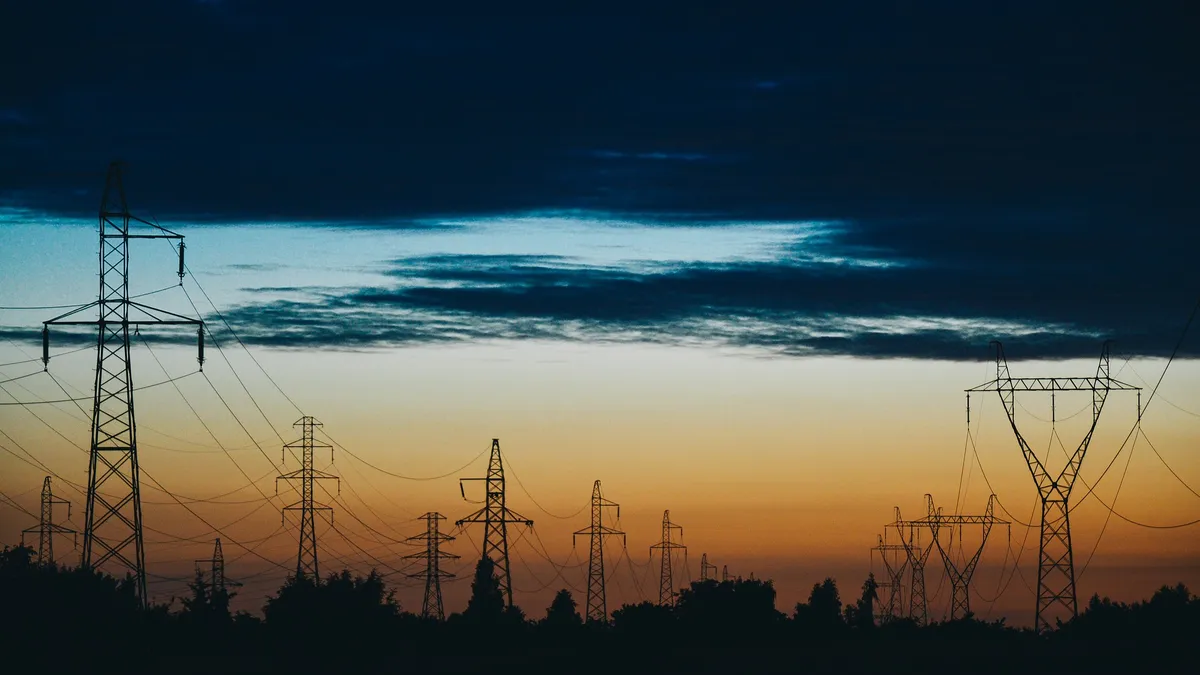Dive Brief:
- Transmission planning, expansion and funding has not kept pace with the evolution of electric generation and use, according to a new report on the future of the U.S energy grid by the National Academies of Sciences, Engineering and Medicine.
-
The report does not predict how the U.S. grid will evolve, but recommends possible solutions to emerging concerns such as ensuring reliability and resilience amid higher levels of intermittent generation and increased demand, the need for equitable and innovative policy and business models, and the continued influx of disruptive technologies.
-
"The transformations occurring on the generation side of the business have happened at a rapid pace over the past decade ... but transmission planning and expansion has not kept up," said Susan Tierney, a member of the committee behind the study and a senior advisor at human capital firm Analysis Group.
Dive Insight:
The energy industry has experienced rapid change over the past decade, but the most disruptive innovations have come from outside the industry, according to David Victor, a professor of international relations at the University of California, San Diego. As a result, he said, investment into critical areas of innovation, including grid technology and cybersecurity, has fallen behind in the U.S.
"The level of innovation spending, from early stage to demonstration, is inadequate," Victor said, highlighting a decade-long decline in energy funding in the U.S. and calling on Congress to "at least double public spending on research and demonstration over the next decade. We are radically under spending in this arena."
During a public briefing on Thursday, Victor and other members of the NASEM committee behind the report repeatedly emphasized the need for that spending to focus on hardening and modernizing the U.S. grid. Tierney presented the case for the creation of a national transmission policy, noting that while some states have shown leadership with respect to grid transmission and growth, "others are laggards in the sense that they have not begun to actively consider" the future of the grid. She also argued that FERC could create transmission corridors in accord with this policy to move energy from regions with plentiful renewable resources to areas of high energy demand.
"What we call for is the development of a policy that makes clear what we are planning for," Tierney said. "Making clear what matters is what we're asking for."
What matters in terms of needed technologies, according to Michael Howard, former CEO of the Electric Power Research Institute, are tools to make the grid both more dynamic and flexible, including new controls, advanced communications, and automation. More effective models and simulations, he said, are critical to "making sure we understand how all these pieces work together."
The committee also spoke of the need for greater cybersecurity measures—including the creation of security standards for technologies entering the grid and secure information sharing protocol to improve reporting of security conditions on the grid. But Granger Morgan, a professor of engineering at Carnegie Mellon University, said that an excessive focus on prevention and on the security of individual technologies has resulted in a lack of preparation to address and recover from attacks when they always occur.
"There are always going to be intrusions," Morgan said. "In the case of the power system, we need cyber resilience in the sense that the system can continue to provide basic services."














